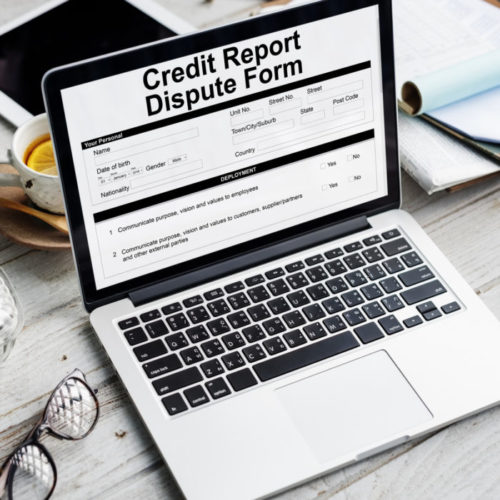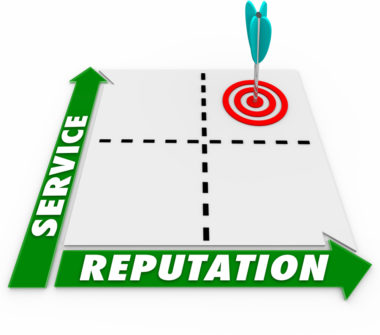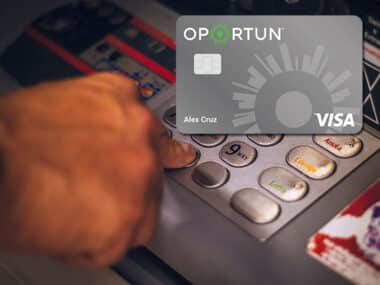No matter how careful you are with your credit, negative items on a credit report can happen to the best of us. Maybe you forgot to make an on-time payment one month, or maybe there was a period where you struggled financially after losing a job or experiencing a change in life circumstances.

Bad luck or bad timing may result in a negative item on your credit report that can dramatically lower your credit score. It can take a lot of time and effort before your credit recovers, so it’s only natural to wonder whether you might be able to remove a negative item.
The good news is that you can always dispute negative errors on your credit report. Even if there’s an accurate but harmful mark on your credit, like a late payment, there are a variety of ways you may be able to remove a negative item, such as contacting your creditor, sending a goodwill letter, or paying to have the mark removed.
Table of Contents
Disputing Errors
Disputing errors is one of the easiest ways to remove negative items from your credit history and quickly boost your score. Errors in your credit report can happen if you have a similar name to someone else, because of a clerical error, or because of a misunderstanding. Clearing up these errors is free, and you don’t need the services of a credit repair company to do it.
To dispute errors, you should first access a free credit report from the three major credit bureaus, Equifax, Experian, and TransUnion. You should carefully review these reports in order to see whether there are any errors. In particular, you should look for items that appear on a report from one credit bureau but not the others. If you find an error, you should contact the credit bureau to dispute the negative item, including as much information about your claim as possible.
Contacting Creditors About Removal
If there are no errors on your credit report, you won’t be able to petition a credit bureau to change your score. Credit bureaus verify accurate information with creditors, and won’t remove negative items if there hasn’t been an error. However, there are still other options when it comes to getting negative items removed.
One effective option is to send a dispute letter to your creditors directly in order to request the removal of a negative item. These negative items can include things like late payments and other one-time errors. If you’re normally a good customer who pays your bills on time and borrows responsibly, creditors may be willing to make an exception if you screw up one month and forget to pay on time.
While this doesn’t work if you have a history of chronic late payments or other bad behavior that may negatively affect your credit, it’s a great strategy if you just have one or two late payments that are dragging down your score.
Pay to Delete Offers
Another option when it comes to removing negative items from your credit score is to offer to pay to delete an item. While paying to improve your credit score isn’t the right move for everyone, it can be a good option if you have the funds to pay what you owe.
This is a good strategy if you have a bill that is long overdue or delinquent. In this scenario, you may be able to offer to pay the balance due to your creditor at once, but only if they agree to remove the negative item on your score.
While not all creditors may take you up on this offer, it’s worth a shot and can make a big difference when it comes to your credit score. If you decide to pursue this strategy, you should make sure to get an agreement in writing before you hand over the payment — this will help ensure that the creditor follows up on their end of the bargain.
Sending a Goodwill Letter
Sending a goodwill letter is a similar strategy to a pay-to-delete offer. However, instead of offering payment in exchange for a creditor removing a negative item from your credit report, with a goodwill letter you’re making an honest appeal to a creditor to remove an item.
Goodwill letters are an effective option if you’ve already paid your past-due bill and don’t have any other leverage with your creditor. It’s a good idea to include an explanation in the letter as to why the negative item occurred. For example, if you were late paying a bill one month because of an unexpected expense or emergency, you might want to mention any extenuating circumstances that were involved.
You should also be sure to include any positive aspects of your status as a borrower, such as a history of on-time payments. While not all creditors will agree to remove the item, it can be a good strategy for boosting your credit score, especially if you only have one or two negative items on your report.
Ineffective Strategies
While there are some simple ways to attempt to prevent negative items from affecting your credit score, there are also a lot of ineffective — or even illegal — strategies. Filing for bankruptcy, for example, won’t remove negative items from your credit report, and accounts that are settled during the bankruptcy process will still appear on your report. Similarly, closing an account with a past-due balance won’t remove that account from your credit report, and you’ll still owe that money to your creditor.
Some credit repair scams may claim that they can remove negative items from your credit report by disputing accurate negative information. While it’s true that you can dispute errors on your credit report, you can’t remove accurate information just because it’s negatively affecting your credit score. Any credit repair company that claims to be able to eliminate negative items in this way is most likely a scam.
Ultimately, one of the best things you can do to eliminate negative items and improve your credit score is be patient. Over time, negative items will fall off your report and will no longer affect your score, with most items falling off your report in about seven years.
Even before negative items fall off your report, they’ll be given less weight over time as you build additional credit history. You can also work to build up good credit over time through on-time payments and responsible financial decisions. If you don’t have the time or energy to personally work on repairing your credit, you can also hire the services of a reputable credit repair company.
Image Source: https://depositphotos.com/






